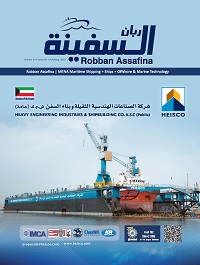Remote ship operations paving the way for autonomous shipping
In June the unmanned Mayflower Autonomous Ship (MAS) arrived in Plymouth, Massachusetts, becoming the largest uncrewed vessel to complete the trans-Atlantic crossing and marking a milestone in the development of autonomous technologies. This is the latest example of several ambitious maritime projects underway on remote control as a prelude to autonomous shipping. What does the future hold for ship autonomy?
Automation for shipping has been traditionally linked to innovation, in a bid to address not only operating costs linked to crew manning, but also human error and maritime incidents linked to human error. A great example of how e-Navigation helped enhance maritime safety is ECDIS which revolutionized operations by enabling continuous monitoring of the ship’s position. Another example is the establishment of ship operation centers by cruise major Carnival in the aftermath of the Costa Concordia disaster, in a bid to enhance ships’ oversight. But what does the “autonomous ship” entail and to what extent is it integrated into shipping operations?
The IMO has identified four degrees of ship autonomy:
- Degree one: Ship with automated processes and decision support: Seafarers are onboard to operate and control shipboard systems and functions. Some operations may be automated and at times be unsupervised but with seafarers onboard ready to take control.
- Degree two: Remotely controlled ship with seafarers onboard: The ship is controlled and operated from another location. Seafarers are available onboard to take control and to operate the shipboard systems and functions.
- Degree three: Remotely controlled ship without seafarers onboard: The ship is controlled and operated from another location. There are no seafarers onboard.
- Degree four: Fully autonomous ship: The operating system of the ship is able to make decisions and determine actions by itself.
Remote ship operations: Latest developments
In 2017, the Svitzer Hermod, the world’s first remotely operated commercial vessel was demonstrated in Copenhagen harbour, Denmark, as part of a cooperation between Rolls-Royce and global towage operator Svitzer. From the quay side in Copenhagen harbour, the vessel’s captain, stationed at a Remote Operating Centre (ROC) at Svitzer headquarters, berthed the vessel alongside the quay, undocked, turned 360°, and piloted it to the Svitzer HQ, before docking again. The Centre was designed to redefine the way in which vessels were controlled. Instead of copying existing wheelhouse design, the ROC used input from experienced captains to place the different system components in the optimum place to give the Master confidence and control. The aim was to create a future-proof standard for the control of vessels remotely. Continuing this project, Svitzer A/S, Kongsberg Maritime and ABS teamed up last year to jointly develop RECOTUG, the world’s first fully operational, and fully remotely controlled tugboat.
At the same year, a team from Wärtsilä Dynamic Positioning remotely controlled a platform supply vessel in the North Sea using a standard satellite link from its office in California. The team used a DP system to send the platform on a ‘box manoeuvre’, 20m in four directions. Then, they used a combination of DP and joystick control to carry out a series of other maneuvers, testing control of surge, sway and yaw, before steering the vessel for a couple of miles of its journey back to Aberdeen. In both cases, a crew was on standby onboard, but they didn’t need to act.
But the most recent ambitious automation project was the fully autonomous Mayflower, meant to sail in a 12-day voyage through the Atlantic as part of a project led by marine research organization ProMare in cooperation with IBM. The ship is equipped with six AI-powered cameras, 30 onboard sensors and 15 edge devices, sending data from the voyage back to the team onshore via satellite connections.
In May, the Mayflower developed an issue with the charging circuit for the generator starter batteries while its voyage across the Atlantic without any humans onboard and had to divert to Halifax, Nova Scotia. This was the second mechanical failure for Mayflower, as earlier in April the ship broke down while sailing from Plymouth, UK, to Washington DC. The ship eventually completed the voyage on 30 June. The year 2022 is also when Yara Birkeland, the world’s first carbon-free autonomous container vessel, will be put into operation.
The way forward for remote ship operations
The issue of fully autonomous ships has attracted a long debate across shipping, with several projects implemented recently to integrate them into commercial operations. However, the slow regulatory framework will likely not allow autonomous ships to mature and be integrated into maritime operations for at least another 10 years, experts seem to agree. Even if we are technology-wise there, we won’t be there regulation-wise, as regulation needs to be harmonized all over the world.
Nevertheless, remote control of ships is growingly becoming a reality. The Mayflower demonstrates how projects involving remote control as a prelude to autonomous ship operation are making headlines worldwide. Remote control technology is increasingly seen as a game changer for moving some crew onshore, rather than developing a completely unmanned ship. Most importantly, remote control is seen as a game changer for increasing safety, with Fleet Operation Centers (FOCs) being on the rise to monitor all aspects of navigational safety.
Source: Safety4sea
| Read Here | |
 |
|



































